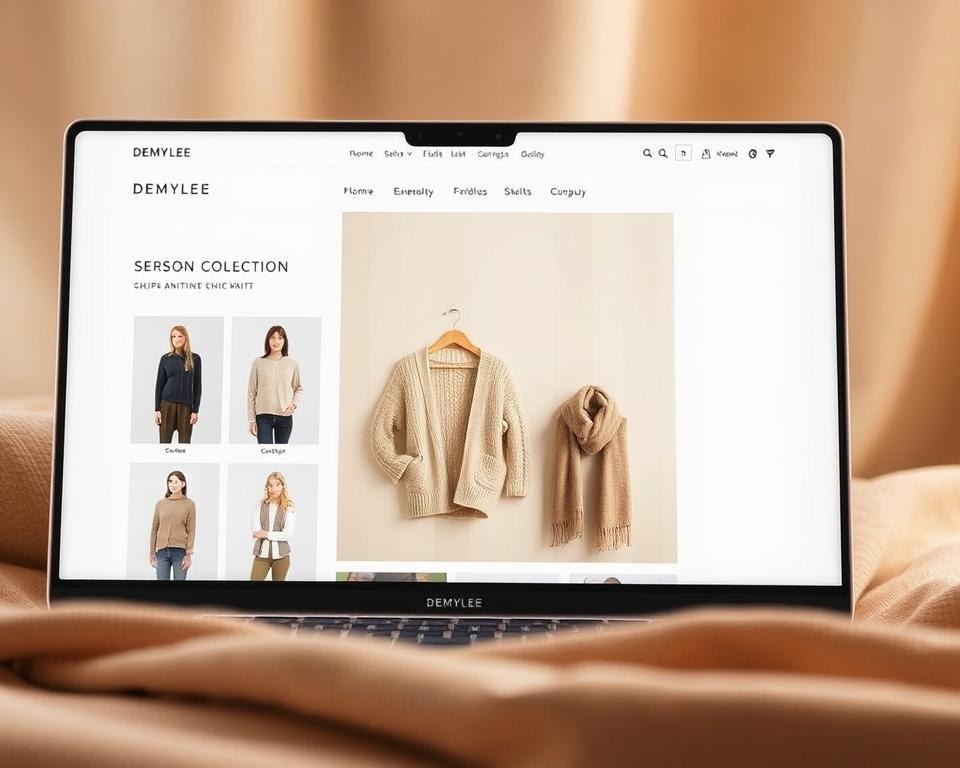Premium Limo Service Lakewood – Luxury Transport
It may surprise you that luxury transportation services have seen a significant upswing in requests in Lakewood? There has been a marked increase in requests for high-end limousine rentals?
At Boulder Rides, we’re honored as the top choice for luxury town car service near me Lakewood in the area. Our fleet boasts a diverse selection, from sleek sedans to luxury SUVs. This ensures our clients have access to the best options for their needs.
We focus on timeliness, expert service, and comfort. We serve a wide range of events, from evenings on the town to airport transfers. Our expert chauffeurs are committed to delivering outstanding service. They make every journey seamless and memorable.
Discover Lakewood’s Top Limo Service
Enjoy the supreme luxury travel experience with Boulder Rides, Lakewood’s premier limo service. We take pride in being leading limo provider in Lakewood, delivering unmatched opulent transport tailored to your preferences.
With more than 20 years of experience in Lakewood, CO, and surrounding areas, we’ve established ourselves as a trusted leader in the industry. Our offerings include various events, including airport transfers, weddings, and business functions.

Acclaimed Luxury Transport
Our dedication to excellence has garnered us multiple accolades in the luxury transportation sector. We aim to uphold the top-tier standards, making sure every journey with us is unforgettable and delightful.
Personalized Service for Every Journey
At Boulder Rides, we understand that every event is distinct. That’s why we offer personalized service, whether it’s for a wedding, corporate event, or a special celebration. Our team collaborates with you to make your experience with us truly exceptional.
| Service | Description | Features |
|---|---|---|
| Airport Transportation | Reliable and timely transportation to and from the airport. | Comfortable vehicles, professional chauffeurs, real-time updates. |
| Wedding Limousine | Luxury transportation for the wedding party and guests. | Variety of luxury vehicles, personalized service, champagne and amenities. |
| Corporate Events | Professional transportation for business travelers and events. | On-time service, comfortable vehicles, flexible booking options. |
Expert Chauffeurs
Our chauffeurs are the heart of our service, delivering expert, secure, and comfortable transportation. Trained to manage various situations, ensuring you arrive your destination safely and punctually.
Fleet Overview
At Boulder Rides, we’re proud of our varied lineup of luxury vehicles. From an affordable limo service in Lakewood or a high-end transportation solution for a special event, we’ve got your back.
Our collection spans from elegant sedans for business travel to roomy vans and Sprinters for larger parties. We also have stretch limos and buses for those grand occasions or company functions.
With Boulder Rides, anticipate the best quality. Our vehicles are kept in impeccable condition, and our drivers are trained to deliver superior service.
- Premium sedans for corporate and airport trips
- Roomy Sprinters and vans for group travel
- Elegant stretch limos for events
- Executive coaches for big groups
At Boulder Rides, we aim to surpass your expectations with Lakewood limo transportation. Whether for business or leisure, our premium fleet ensure your journey is both comfortable and memorable.
See the distinction with Boulder Rides, your top choice for luxury transportation in Lakewood. Contact us today to book your next luxurious ride.
Events & Occasions
Planning a wedding, corporate event, or special celebration?, our limousine service in Lakewood, CO, is perfect. At Boulder Rides, we know every event is unique. Our mission is to create lasting memories.
Wedding Limo Service
Your wedding day is unforgettable. Our wedding transportation services enhance this moment. Our luxury vehicles and professional chauffeurs ensure you arrive in style and punctually.
Business Transportation
For corporate events and business travel, our limousine service offers a dependable, comfortable ride. Our chauffeurs are experienced at fulfilling business travelers’ needs. They ensure you arrive refreshed and ready for your destination.
Airport Transfers
Traveling can be stressful. But with Boulder Rides’ airport transfer services, sit back. Our professional chauffeurs will greet you at the airport. They’ll transport you to your destination in luxury.
Celebration Rides
Whether birthdays, anniversaries, or milestones, our limousine service is ideal for a grand celebration. Our luxury vehicles and experienced chauffeurs will make your event unforgettable.
Service Areas Throughout Lakewood and Beyond
Boulder Rides stands as your go-to for limo service in Lakewood, serving both the local community and beyond. Proudly providing our premium transportation services to Lakewood, CO, and its surrounding locales. This ensures you arrive at your destination in both style and comfort.
Our best limo service in Lakewood is unparalleled, focused on delivering outstanding service for every trip. From airport runs to evening outings to nuptials, we’ve got you covered.
At Boulder Rides, we recognize that every event is distinct, and our goal is to create unforgettable moments. Our limo service in Lakewood caters to all events, with our professional chauffeurs committed to ensuring a comfortable, worry-free ride.
We serve Lakewood and its surrounding areas, including various local attractions and venues. Our service area encompasses:
- Lakewood, CO
- Nearby towns and cities
- Local event venues
- Airports and other transportation hubs
Choosing Boulder Rides means opting for the best limo service in Lakewood. Our dedication to quality, combined with our expertise in local routes, makes us the top provider for luxury transportation.
Our Unique Edge
Boulder Rides is transforming luxury transportation in Lakewood by focusing on safety, punctuality, and clear pricing. Our mission is to deliver an unparalleled travel experience that surpasses our clients’ expectations.
Safety Focus
Safety is our utmost concern at Boulder Rides. We adhere to a strict maintenance regimen for our fleet, ensuring every vehicle is in top-notch condition. Our drivers are thoroughly screened and trained, guaranteeing a safe and comfortable journey.
Punctuality Guarantee
Arriving on time is critical, whether for a business meeting or a special occasion. Our punctuality pledge ensures you’ll get there without delay. We work closely with you to coordinate schedules.
Transparent Pricing
Our pricing is transparent, with zero surprises. You’ll be fully informed of what you’re paying for. We customize plans to fit your budget, offering great ROI.
| Service | Features | Benefits |
|---|---|---|
| Premium Limo Hires | Professional chauffeurs, luxury vehicles | Comfort, safety, and style |
| Airport Shuttles | Reliable transportation, on-time guarantee | Reduced stress, increased productivity |
| Special Event Transportation | Customized packages, luxury vehicles | Unforgettable experience, hassle-free |
At Boulder Rides, our aim is to provide the finest luxury transportation in Lakewood. Whether you’re planning a couples’ retreat or a night out, we offer the perfect ride and chauffeur for an exceptional journey.
Booking Your Lakewood Limo Service Made Simple
At Boulder Rides, we know reservations can feel daunting. But our streamlined process ensures your Lakewood luxury transportation needs are handled with care. We strive for simplicity and ease.
We’ve created an intuitive reservation process your limo service. Our web booking platform is easy to use, allowing you to book in just a few clicks. This makes the process simple and fast.
Online Reservation System
Our online reservation system is always open, giving you the freedom to reserve anytime. The interface is intuitive, allowing you to choose a car, set pickup/drop-off points, and add extras easily.
Here’s what you can expect from our online reservation system:
| Feature | Description | Benefit |
|---|---|---|
| Easy Booking | Simple, intuitive interface | Quickly book your limo service |
| Flexible Options | Choose from a range of vehicles and services | Tailor your experience to your needs |
| Real-time Availability | Check availability in real-time | Ensure your preferred vehicle is available |
Customizable Packages
At Boulder Rides, every event calls for a custom solution. That’s why we offer customizable packages to meet your specific needs. From romantic escapes to nights on the town, we’ll make it special.
Our customizable packages include a variety of services:
- Luxury vehicles for hire
- Professional chauffeurs
- Airport transfers
- Special event transportation
Opting for Boulder Rides guarantees exceptional service. Our attention to detail and quality distinguishes us from others.
Corporate Transportation Solutions
In Lakewood, CO, Boulder Rides stands out as the leading limo provider for businesses. Our solutions cater to every corporate need, from boardroom transfers to executive airport runs. We ensure your journey is top-tier.
Understanding business travel needs, Boulder Rides offers a selection of luxury vehicles. Our fleet includes executive cars, SUVs, and vans, catering to various business requirements. Our chauffeurs are expertly trained, guaranteeing your safe and timely arrival.
“Boulder Rides has been our go-to transportation service for corporate events. Their professionalism and reliability are unmatched.”
Our Lakewood limo services are crafted for corporate clients. We provide flexible contracts, for single events or repeat service. This flexibility ensures your transportation aligns perfectly with your business goals.
Expecting clear rates, punctuality, and a focus on safety, Boulder Rides aims to make your business travel smooth. Our limousine service is tailored for comfort and convenience, whether for work or leisure.
- Luxury vehicles for a comfortable ride
- Professional chauffeurs for a safe journey
- Customizable packages for your business needs
Partnering with Boulder Rides gives you a trusted transportation partner. We prioritize your needs, for a smooth, worry-free ride.
Customer Success Stories and Testimonials
At Boulder Rides, our clients’ journeys are the highlight of our business, reflecting Lakewood’s limo service. We’re proud to have served numerous clients with our premium limousine services. Ensuring every journey is memorable is our goal.
Experiences of Wedding Couples
Our wedding couples have had memorable journeys with us, enjoying a stress-free and luxurious ride to their special day. The attention to detail and professionalism of our chauffeurs have been praised by many.
“Boulder Rides made our wedding day even more special with their exceptional service and luxurious limousine. We couldn’t have asked for more!”
Reviews from Business Clients
Our business clients value the reliability and punctuality of our offering. They choose us for top business travel.
| Service Aspect | Rating | Feedback |
|---|---|---|
| Punctuality | 5/5 | “Boulder Rides is always on time, which is vital for our business meetings.” |
| Professionalism | 5/5 | “The chauffeurs are well-trained and courteous, making our clients feel valued.” |
Event Reviews
From red-carpet events to airport transfers, our clients have praised our service for its excellence and reliability.
- Luxurious vehicles that make a statement
- Professional chauffeurs who ensure a smooth ride
- Customizable packages to fit any occasion
At Boulder Rides, we’re committed to making your experience unforgettable. Whether you’re looking for a romantic getaway or a night out on the town, we’ve got the perfect vehicle and driver for you. Our Lakewood limo rental service is unmatched, and we aim for excellence each trip.
Why We’re the Best
At Boulder Rides, we’re proud of our top-tier limo service. Designed to meet your unique needs, our commitment to quality is evident everywhere, from our premium vehicles to our expert drivers.
Our area expertise distinguishes us. We’re well-versed in Lakewood, guaranteeing timely, stylish arrivals. Here’s why we’re a top pick:
- Extensive knowledge of Lakewood’s roads and attractions
- Personalized service to meet your specific needs
- Flexibility to fit your timetable
Area Expertise
Our local expertise comes from our extensive local experience. We value timeliness and consistency, essential for important occasions.
Premium Fleet Maintenance
Our fleet of luxury vehicles is a point of pride. We upkeep them to ensure a luxurious experience. They’re equipped with latest features like Wi-Fi, TV, and refreshments.
The benefits of our premium maintenance include:
- Frequent inspections for peak condition
- Advanced safety features for passenger protection
- Spotless interior and exterior for a luxurious feel
Affordable Luxury
We believe premium travel can be cost-effective. That’s why our rates are competitive without sacrificing quality. Whether it’s a one-time ride or ongoing service, we’ve got you covered.
At Boulder Rides, your journey is our priority. Contact us today to learn more about our limo service in Lakewood and book your next ride.
Begin Your Luxury Journey
At Boulder Rides, we take pride in being the premier limo service in Lakewood. Our focus is on delivering unmatched luxury transportation in Lakewood. We aim to provide excellence in each journey, ensuring an experience you’ll never forget.
Whether it’s a couples’ retreat, a evening adventure, or a corporate event, we’ve got the ideal solution. Like Eddie Limo, our varied lineup meets various tastes and preferences.
Our luxury transportation in Lakewood is crafted for distinct journeys. With professional chauffeurs and top-tier cars, we’re committed to making your journey unforgettable. Begin your luxury transportation journey with Boulder Rides today.
FAQ
What types of vehicles are available for Lakewood limo rentals?
At Boulder Rides, our fleet includes a range of premium cars. You can choose from elegant sedans, luxury SUVs, stretch limousines, vans, Sprinters, and executive coaches. We serve every need and occasion.
For what events can I book your limo?
We serve a wide range of special occasions, including nuptials, corporate events, airport runs, and special celebrations. Our goal is to ensure unforgettable rides.
How can I reserve a limo?
Booking your Lakewood limo service is straightforward. Use our online reservation system for a quick booking. Our tailored plans ensure your experience is just right.
What is your safety record like?
Safety is our utmost concern at Boulder Rides. We guarantee a secure ride. Our professional chauffeurs are thoroughly vetted and trained.
Do you cover surrounding areas?
Yes, we’re proud to serve Lakewood and surrounding areas. We provide outstanding transport, whether it’s a ride to the airport or a night out.
What makes you different?
Our pursuit of top-tier service sets us apart. We offer acclaimed transport, custom care, and clear rates. This makes us stand out.
Can I customize my limo service package?
Yes, our tailored plans allow you to tailor your experience. This ensures you get the best value.
How on-time are you?
We guarantee punctuality. We ensure you arrive at your destination on time. Our professional chauffeurs are trained to provide exceptional service.
Are there hidden fees?
Our transparent pricing means you know exactly what you’re paying for. There are no hidden fees or unexpected charges.









